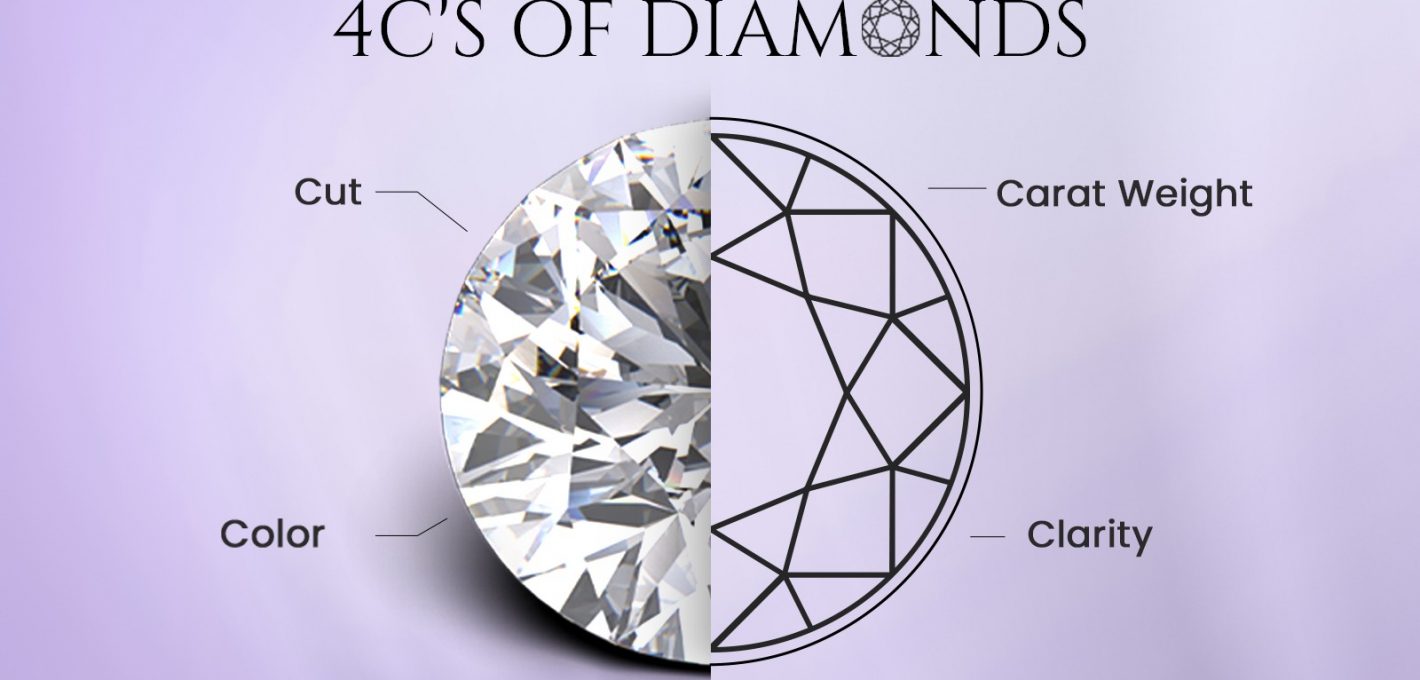When buying a diamond, whether natural or lab-created, the 4Cs—cut, color, clarity, and carat weight—play an essential role in determining its quality and value. The 4Cs in diamonds are critical for all buyers to understand, especially with the growing popularity of lab-created diamonds. Lab-created diamonds are gaining recognition for being an ethical and cost-effective alternative to natural diamonds, but their value is still based on the same 4Cs. In this article, we’ll delve into the significance of each of the 4cs in diamonds what matters and how they apply to lab-created diamonds.
Cut: The Most Important of the 4Cs in Diamonds
When discussing the 4Cs in diamonds, the cut is often regarded as the most crucial factor affecting a diamond’s overall appearance. This is especially true for lab-created diamonds, where the cut can significantly impact the brilliance and sparkle of the stone. Unlike the other Cs, which are determined by nature, the cut is entirely in the hands of the diamond cutter. A well-cut diamond, whether natural or lab-created, will reflect light beautifully and exhibit exceptional fire and brilliance.
For lab-created diamonds, the quality of the cut remains just as important. While lab-created diamonds are grown in controlled environments, they still require expert craftsmanship to ensure their proportions, symmetry, and facets are meticulously shaped. A diamond that is poorly cut can appear dull or lackluster, no matter its clarity, color, or carat weight. This makes the cut a top priority when considering the 4Cs in diamonds.
Color: How Lab-Created Diamonds Compare
Color is another key aspect of the 4Cs in diamonds. Diamonds come in various shades, but the most valuable diamonds are colorless or near-colorless. The Gemological Institute of America (GIA) grades diamonds on a scale from D (colorless) to Z (light yellow or brown). For lab-created diamonds, the color grading is the same as for natural diamonds, ensuring that the color quality remains comparable.
Many people are surprised to learn that lab-created diamonds can be just as colorless and visually stunning as their natural counterparts. In fact, lab created diamonds are often free from the natural inclusions and imperfections found in mined diamonds, which can contribute to a more consistent color. Whether you choose a natural or lab-created diamond, the color will have a significant impact on its overall beauty and value.
Clarity: Evaluating the Purity of Lab-Created Diamonds
Clarity is an essential factor when assessing the quality of a diamond, and it applies equally to both natural and lab-created diamonds. This aspect of the 4Cs refers to the presence of inclusions (internal flaws) and blemishes (external flaws) within the diamond. Clarity grading is determined based on the size, nature, and location of these imperfections. A flawless diamond is rare and typically commands a higher price.
Lab-created diamonds generally have fewer inclusions than natural diamonds because they are grown in a controlled environment, making it easier to produce diamonds that are near-perfect. However, this doesn’t mean that all lab-created diamonds are flawless. Depending on the conditions during the creation process, inclusions may still appear, but they are typically less noticeable than in natural diamonds. Therefore, the clarity of a lab-created diamond can be just as high, if not higher, than that of a natural diamond.
Carat Weight: The Final C in the 4Cs
Carat weight is another crucial element of the 4Cs in diamonds. This refers to the size of the diamond, with one carat being equivalent to 0.2 grams. Larger diamonds are rarer and, as a result, typically more expensive. The weight of the diamond also influences how it appears in a setting, with larger diamonds often making a more dramatic visual impact.
When it comes to lab-created diamonds, carat weight plays the same role as it does for natural diamonds. Lab-created diamonds are available in various carat weights, so you can choose one that fits your budget and style preferences. Additionally, because lab-created diamonds are generally more affordable than natural diamonds, you may be able to afford a larger carat weight for the same price.
The 4Cs in Diamonds: What Matters Most for Lab-Created Diamonds?
The 4Cs in diamonds—cut, color, clarity, and carat weight—are important to consider for both natural and lab-created diamonds. While lab-created diamonds are grown in a laboratory rather than mined from the earth, their quality is still measured by the same standards that apply to natural diamonds. The key difference lies in the ethical and environmental advantages of lab-created diamonds, which offer an alternative to traditional diamond mining.
For those considering lab-created diamonds, it’s essential to focus on all the 4Cs when making a purchasing decision. Since lab-created diamonds can be produced with fewer imperfections, they can often offer greater value in terms of clarity and color compared to natural diamonds. Furthermore, because they are more affordable, you may have the opportunity to invest in a higher-quality diamond than you would with a natural stone.
Conclusion: Evaluating What Matters with Lab-Created Diamonds
In conclusion, when it comes to the 4Cs in diamonds, what truly matters depends on your personal preferences and priorities. Whether you’re considering a lab-created diamond or a natural one, it’s essential to evaluate the cut, color, clarity, and carat weight to determine the best choice for you. Lab-created diamonds provide an ethical, sustainable, and often more affordable option without sacrificing quality. Understanding how the 4Cs apply to these diamonds will help you make an informed decision and choose a diamond that meets your expectations in terms of beauty, value, and environmental impact.


